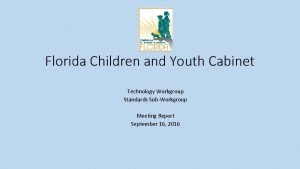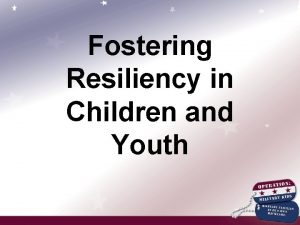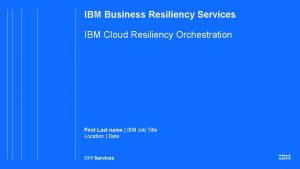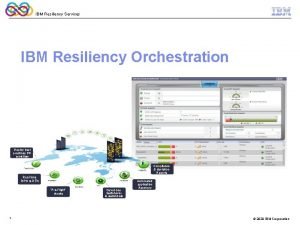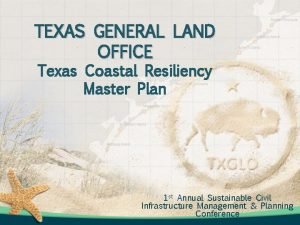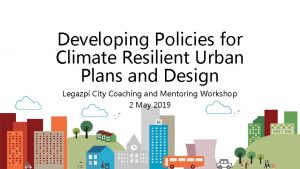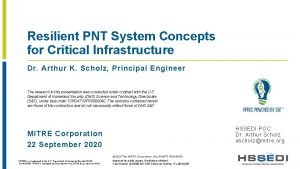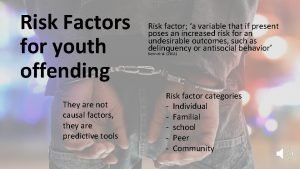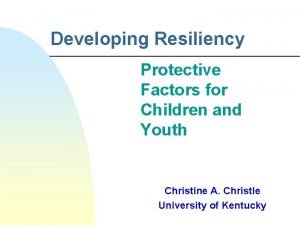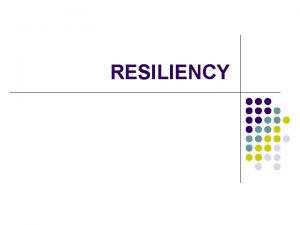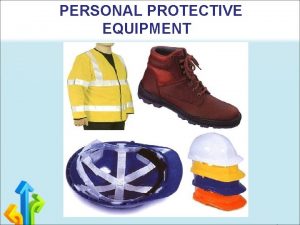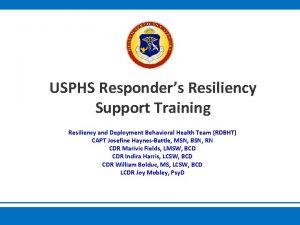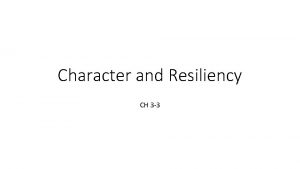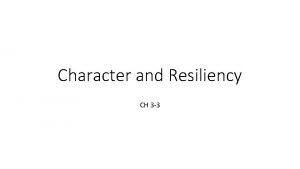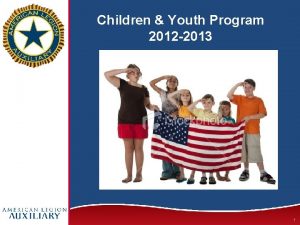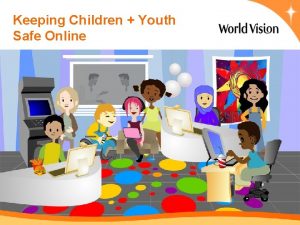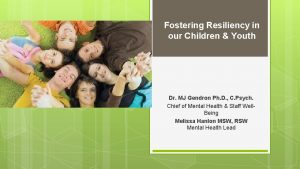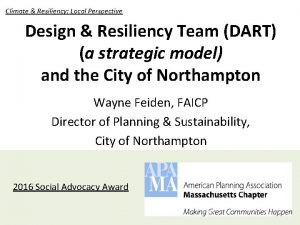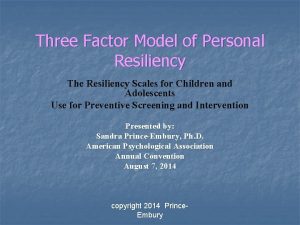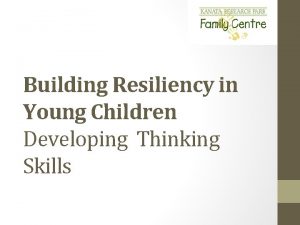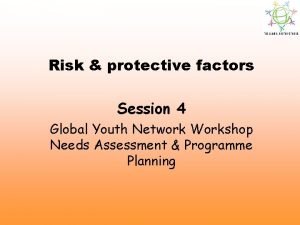Developing Resiliency Protective Factors for Children and Youth
























- Slides: 24

Developing Resiliency Protective Factors for Children and Youth Christine A. Christle University of Kentucky

Traditional Approaches to misbehavior n The traditional responses have been reactive and punitive u coercive cycles u corporal punishment u suspension u expulsion u incarceration

Prevention - Proactive Goals n n n Understand the risk factors Develop effective programs to overcome risk factors Enhance the protective factors that promote resiliency

At-Risk Operational definition: n n Disabling, cultural, economic, or medical conditions. . . That deny or minimize opportunities and resources in a variety of settings. . .

n . . . For a person becoming a meaningful member of his or her community u home, u school, u neighborhood (Welch & Sheridan, 1995).

Risk Factors n Domains u Individual u Family u School u Community

The good news is. . . n “Half to two-thirds of children growing up in families with mentally ill, alcoholic, abusive, or criminally involved parents or in poverty-stricken families do overcome the odds and turn a life trajectory of risk into one that manifest “resilience” (Benard, 1995)

Resiliency n An individual’s, family’s, or community’s ability to cope or “bounce back” from significant adverse life situations or stresses in such ways that are not only effective, but result in an increased ability to respond to future adversity (Mangham, Mc. Grath, Reid & Stewart, 1995)

Resiliency Factors Domains u Individual u Family u School u Community

Individual n n n n n Good health Self-control flexibility Good communication skills Self-esteem / self-worth Sense of humor Easy temperament Sense of purpose Social competence

Family n n n Positive parent-child relationship (respect and love) Effective parenting- monitoring Structures & rules within a home Responsibilities among members Extended family network Family advocacy for their children (nutrition, health care, education, etc. )

School Resiliency Factors n “A good school experience can compensate to some degree for a home environment replete with risk” (Rutter & Quinton, 1984)

School n n n Provide a positive and safe learning environment Teach life skills (choices, planning) Set clear boundaries Set high, yet achievable, academic and social expectations Provide respect and support while facilitating academic and social success Provide for meaningful participation

Community n n n Community mentors After school programs Employment opportunities Supervised recreation Volunteer activities

Accentuate the Positive n Research validates that we are all born with an innate capacity for resilience by which we are able to develop the responsive qualities that foster resilience (Benard, 1995)

Protective Factors n Factors that can be modeled to strengthen or develop the qualities of resilience in children while shielding risk…an educator's opportunity: Provide. . . u Caring Relationship u High Expectations u Opportunities for Participation

Caring Relationships The Teacher ……The most frequently encountered positive role model outside the family n n n Conveys: compassion understanding respect trustworthiness sincere interest n n n Utilizes rituals and traditions in the classroom Celebrates traditions Provides oneon-one time

High Expectations n Focus on the individual student u interests u experiences u strengths n n Have necessary materials for success Eliminate fear or threat

Opportunities for Participation n Meaningful involvement and responsibilities Hands-on learning Student involvement u curriculum planning u cross-age tutoring or mentoring u decision making in school policies/rules

More Strategies n n Imbed the seven resiliency traits Teach the language of resilience

Resiliency Traits n Insight u Children are involved in assessing their own work n Independence u Children help develop standards for their work n Relationships u Children have many opportunities to work collaboratively n Creativity u Children can make choices

Resiliency Traits n Initiative u Children participate in meetings to solve classroom problems n Humor u Children feel safe and connected in a classroom structured community n Morality u Children are active in setting rules for classroom/school life – (Bickart & Wolin, 1997)

Language of Resiliency A language tool that reinforces support systems for students and encourages resiliency n n n I am I have I can (Internal Sources) (External Sources) (Social Sources)

Summary Developing Resiliency n Proactive Prevention Approach n Research based n Understand risk factors n Promote resiliency in each domain u Three keys u Seven Traits u Language of Resiliency
 Florida children and youth cabinet
Florida children and youth cabinet Aces protective factors
Aces protective factors Protective factors definition
Protective factors definition Business continuity and resiliency services
Business continuity and resiliency services Resiliency orchestration
Resiliency orchestration Ibm resiliency orchestration
Ibm resiliency orchestration Ibm geographically dispersed resiliency for power systems
Ibm geographically dispersed resiliency for power systems Ibm aix high availability
Ibm aix high availability Sgip equity resiliency program
Sgip equity resiliency program Texas glo gis
Texas glo gis Calactite
Calactite Resiliency
Resiliency Risk factors for youth offending
Risk factors for youth offending Abiotic factors example
Abiotic factors example Abiotic factors and biotic factors
Abiotic factors and biotic factors Aboitic environment
Aboitic environment Common factors of 8 and 36
Common factors of 8 and 36 Common factors of 10 and 20
Common factors of 10 and 20 Common factors of 8
Common factors of 8 Fspos
Fspos Novell typiska drag
Novell typiska drag Nationell inriktning för artificiell intelligens
Nationell inriktning för artificiell intelligens Ekologiskt fotavtryck
Ekologiskt fotavtryck Varför kallas perioden 1918-1939 för mellankrigstiden?
Varför kallas perioden 1918-1939 för mellankrigstiden? En lathund för arbete med kontinuitetshantering
En lathund för arbete med kontinuitetshantering
